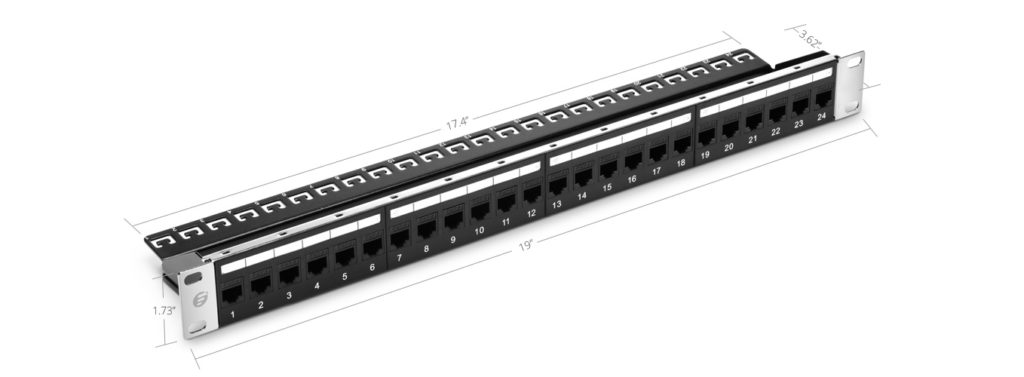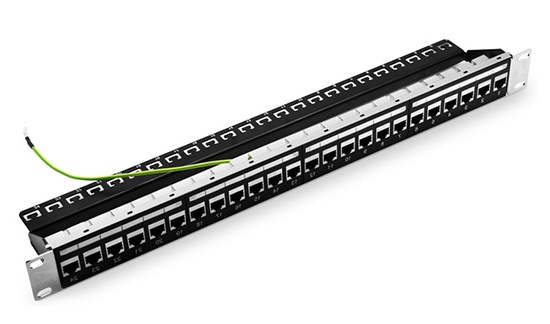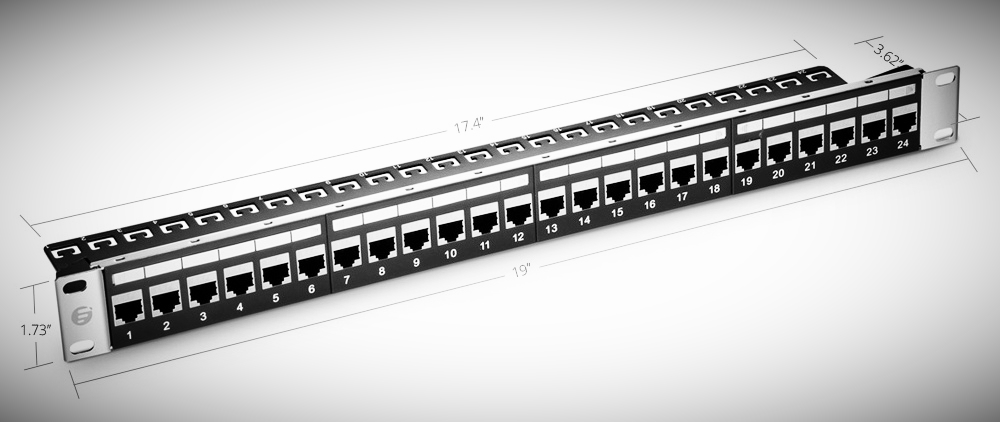Patch panels are always the indispensable component of tidy and neat cabling system in the data center. There are many Ethernet patch panel types available on the market. According to different cable types, there are different patch panels, such as the cat6 patch panel and cat6a patch panel. Then what’s cat6 and cat6a patch panel? Will Cat6 patch panel work with Cat6a cable?
What Is Cat6 Patch Panel
As the name suggests, the Cat6 patch panel is designed for Cat6 cable management in Gigabit Ethernet applications. With these panels, users can easily manage cables and save space of the data center rack. The Cat6 patch panel features high density to deliver the performance needed for current and next generation data communication networks and applications. These high-density panels offer different port versions, such as the 24, 48 port patch panel.

Figure: Cat6 Patch Panel: used for Cat6 cable management
What Is Cat6a Patch Panel
The Cat6a patch panel is designed for Cat6a cable management. The Cat6a patch panel is a 10G series panel. It also can offer different port versions, such as 24 port Cat6a patch panel and 48 port Cat6a patch panel. The Cat6a patch panel features port labeling areas and port numbering for easy circuit identification. In addition, it offers maximum strength and durability. This Ethernet patch panel can be easily installed in a universal 19″ rack/cabinet or a wall-mounted bracket with a 1U standard height.
Difference Between Cat6 Patch Panel and Cat6a Patch Panel
In fact, there is no big difference between the Cat6 and Cat6a patch panels. The cat6 patch panel is used to manage the cat6 cables, and the cat6a patch panel is used to manage the cat6a cables. So the main difference between Cat6 patch panel vs Cat6a patch panel lies in the wire gauge specified for cat6 and cat6a cables – cat6a cables are thicker and bulkier than Cat6 cables.
Can Cat6 Patch Panel Work with Cat6a Cable?
Will it work if the Cat6a cable is installed on the Cat6 patch panel? There are several things to consider before answering it.
The Cat6a cable is the improved version of the Cat6 cable. But they share the same RJ45 connectors. So there is no doubt that the Cat6a cable can be plugged into the Cat6 patch panel.
Since the Cat6a cables are thicker and bulkier than Cat6 cables, the corresponding minimum bend will be larger. This will change the installing requirements of cabling and the design of routing. For an instance, if the Cat6a cables are installed on the Cat6 panel, the thinker cables may be bend. So it will be not safe enough, users need to manage it more patiently and carefully.
In general, the conductor determines if the connection is working. Then, since both the Cat6a cable and the Cat6 patch panel have the same RJ45 connectors, the Cat6a cable and the Cat6 panel can work together. Just as mentioned above, it is not safe enough.
Therefore, the Cat6a cables are able to run on the Cat6 panel. I still recommend not taking such an adventure. Because the cables may be out of work, which will cause damages to your business.
Conclusion
With the advancement and development of technology, today’s data centers require a more reliable and flexible cable management system. The Cat6 patch panel and Cat6a patch panel are integral parts of the Cat6 and Cat6a cable management. The above content has given some details about Cat6 and Cat6a patch panel. Hope it can help you to understand the two.

